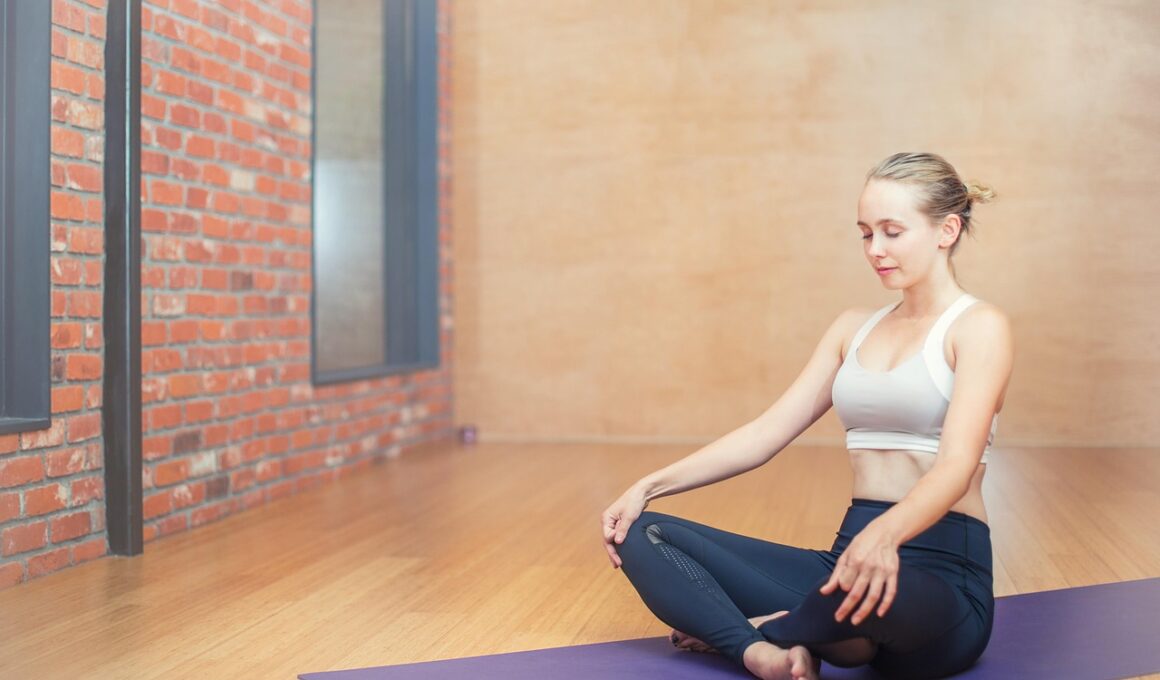Mindfulness Exercises to Include in Your Daily Life
Practicing mindfulness can significantly enhance your well-being through various simple exercises that can be easily integrated into daily routines. One effective exercise is the body scan, which involves paying attention to each part of your body sequentially. Start by lying down comfortably and focus on your toes, gradually working your way up to your head. This helps cultivate awareness and can reduce stress. Another great exercise is mindful breathing. Each day, set aside a few minutes to concentrate solely on your breath. Notice the sensation of air entering and leaving your nostrils and your chest rising and falling. This practice grounds you in the moment, promoting relaxation. Jotting down your thoughts in a gratitude journal each evening can also solidify mindfulness. Taking time to reflect on positive moments helps reshape your mindset. Finally, engage in mindful walking. As you stroll, be conscious of your movements and surroundings. Pay attention to each step and its impact. These methods encourage peace and present-moment awareness, establishing a foundation for deeper mindfulness practice.
Another powerful technique is the practice of loving-kindness meditation, which enhances feelings of compassion towards yourself and others. To begin, sit comfortably and close your eyes. Silently repeat phrases such as “May I be happy, may I be safe,” while visualizing someone you care about. Gradually shift your focus to include others, extending goodwill even to those with whom you may struggle. This practice fosters emotional resilience and reduces negative feelings, making it vital for everyday life. Furthermore, practicing mindful eating can transform mundane meals into profound experiences. Slow down and savor each bite, noticing the texture, flavor, and aroma of your food. This approach cultivates appreciation and can lead to healthier eating habits. Try to eliminate distractions like TV or phones during meals. Incorporating these practices consistently creates a mindful lifestyle, where stability replaces chaos. To further encourage mindfulness, you may consider adding a daily reminder on your phone or post-it notes in your home. Start small and gradually work these practices into your life. Each step adds richness to your day and reinforces your commitment to living mindfully.
Mindfulness in the Workplace
Incorporating mindfulness into your workday can improve focus and productivity. One way to do this is by taking mindful breaks. Schedule time throughout your day to step away from your desk, close your eyes for a moment, and concentrate on your breathing. This practice refreshes your mind and reduces stress levels, allowing for clearer thinking. Consider organizing your workspace mindfully as well. A clutter-free environment promotes a sense of calm. Dedicate time each week to declutter your workspace. Mindful communication is another vital aspect in a professional setting. Listen actively when colleagues speak; this fosters stronger relationships and enhances teamwork. Make an effort to attend meetings with an open mind, focusing on constructive contributions rather than distractions. Practicing mindfulness can lead to improved job satisfaction and lowered anxiety. Encourage your team to engage in group mindfulness exercises, such as short meditations before meetings. These collective practices unite employees, creating a cohesive work environment. Overall, embracing mindfulness transforms both individual productivity and team dynamics. With commitment, these techniques will create a balanced work atmosphere, positively affecting overall performance.
Another essential aspect of mindfulness practice is emotional awareness. Take time each day to check in with your feelings. Recognizing your emotions as they arise helps create a sense of clarity and understanding. Whether it’s journaling in the morning or using an app to track your moods, this self-awareness cultivates inner peace. Additionally, practicing kindness towards yourself can be a central component of mindfulness. Often we are our harshest critics, which can lead to stress and anxiety. By treating yourself with compassion and acknowledging your efforts, you empower a healthier mental state. Give yourself reassurance in moments of self-doubt, embracing imperfection. Integrating mindful moments into transitions between activities can be transformative. For example, before moving from one task to another at work, take a minute to breathe and reset your mindset. This practice reduces overwhelm and helps maintain a clearer focus. Try also to be mindful in routine tasks, like washing dishes or brushing your teeth; experience these moments fully instead of rushing through them. This approach allows daily activities to become opportunities for mindfulness and connection.
Mindfulness Practices Beyond the Everyday
Exploring advanced mindfulness practices can deepen your understanding and experience. One such technique is meditation retreats, which serve as immersive experiences dedicated to self-exploration and mindfulness. Attending a retreat allows practitioners to step away from daily distractions and fully commit to their practice. Many retreats focus on different techniques, such as Vipassana or Zen meditation. Participating in these can deepen your insights. Moreover, joining mindfulness or meditation groups provides community support, allowing individuals to share experiences and techniques. Feeling connected with like-minded individuals creates motivation and accountability. Additionally, integrating the practice of mindful creativity can open new pathways for self-expression. Engaging in arts, crafts, or writing mindfully leads to deeper connections with your creative self. Focus on the process instead of the final product, allowing the experience to guide you. Nature mindfulness is another enriching practice. Spend time outdoors, engaging with the environment around you. Observe the colors, sounds, and textures of your surroundings. This practice fosters appreciation for nature and enhances your sense of belonging. Overall, advanced mindfulness practices introduce new dimensions into your journey of self-discovery, enhancing well-being.
Finally, consider the benefits of technology in aiding mindfulness practices. Many apps offer guided meditations, mindfulness exercises, and tracking features to help you stay committed to your journey. Some popular options include Headspace, Calm, and Insight Timer. These resources can offer a variety of styles and techniques to fit individual preferences. Additionally, you can explore online groups or forums that share mindfulness practices and experiences. Virtual community support creates an inclusive space for everyone. Also, setting daily mindfulness reminders on your devices can keep you accountable. Notifications encouraging you to pause and reflect can serve as useful prompts. Another technological avenue is through podcasts that cover mindfulness topics. Productions featuring interviews, discussions, and guidance can enrich your understanding effectively. Incorporating technology intentionally can deepen your mindfulness journey without falling into excessive distraction. As you navigate different mindfulness tools, ensure they align with your goals. Aim to find a balanced relationship with technology that enhances rather than detracts from mindful living. In summary, technology can greatly support your practice if considered consciously and responsibly.
Conclusion: Making Mindfulness a Habit
To fully integrate mindfulness into your life, commitment, and consistency are key. Begin small by incorporating one or two exercises from this article into your daily routine. Over time, these practices will become second nature. Evaluate your progress regularly and adjust your techniques to suit your needs. Remember that mindfulness is a skill that develops with practice. Patience is essential. It’s not about achieving perfection; it’s about nurturing presence in each moment. Surround yourself with supportive individuals who encourage your mindfulness journey; they can help sustain motivation and accountability. Don’t hesitate to seek professional guidance or classes if you feel overwhelmed. Mindfulness teachers can provide resources to deepen your comprehension of the topic. Consider scheduling regular check-ins with yourself to assess your growth and realign your mindfulness goals. Create an inviting space for practice within your home dedicated to mindfulness activities. This place can serve as a reminder of your commitment. Ultimately, by embracing mindfulness, you enhance not only your life but also the lives of those around you, creating a ripple effect of positivity.
Incorporating mindfulness into daily life leads to improved emotional well-being and raises awareness. Take action today, explore these exercises, and make them your own. Mindfulness serves as a foundation for greater self-understanding and personal growth.


